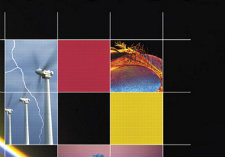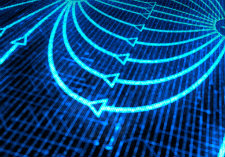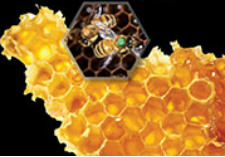 AP Physics 2: Algebra-Based
AP Physics 2: Algebra-Based
AP Physics 2 is an algebra-based, introductory college-level physics course. Students explore principles of fluids, thermodynamics, electricity, magnetism, optics, and topics
in modern physics. The course is based on seven Big Ideas, which encompass core scientific principles, theories, and processes that cut across traditional boundaries and provide a broad way of thinking about the physical world.
The course focuses on the interconnections between the various strands and units contained in the course syllabus and how each contributes to the “Big Ideas” that provide a core foundation for this science course. Problem solving techniques and strategies are fined tuned throughout the year, and students are continually tasked with connecting physics applications learned in different units in order to synthesize solutions to complex problems. The emphasis on theoretical topics, critical thinking and problem solving makes this class challenging. Mathematics is used to illuminate physical situations rather than to show off a student’s manipulative abilities. Students must be strong in both math and science to be successful in this course. Conceptual understanding of the material is a requirement for success. Students will be expected to write justifications and explanations of physics concepts
In this course, students will have opporunities learn the following Big Ideas:
- Objects and systems have properties such as mass and charge. Systems may have internal structure.
- Fields existing in space can be used to explain interactions.
- The interactions of an object with other objects can be described by forces.
- Interactions between systems can result in changes in those systems.
- Changes that occur as a result of interactions are constrained by conservation laws.
- Waves can transfer energy and momentum from one location to another without the permanent transfer of mass and serve as a mathematical model for the description of other phenomena.
- The mathematics of probability can be used to describe the behavior of complex systems and to interpret the behavior of quantum mechanical systems.
 AP Physics C Electricity and Magnetism
AP Physics C Electricity and Magnetism
This course is equivalent to a first semester calculus-based college physics class for majors in the physical sciences, engineering, mathematics, or computational sciences. It is expected that students in this course will have a command of mathematical skills for basic differential and integral calculus, as these concepts are used throughout the course.
Course requirements: Since this is a calculus-based physics course, students are required to take Calculus AB concurrently as a minimum requisite. However, many students have already had Calculus AB upon entering the course and take Calculus BC concurrently. Students are expected to solve problems with a high degree of complexity consistent with a university-level electricity and magnetism syllabus.
Topics covered include measurement, electric forces, electric fields, magnetism, electromagnetism, electricity and circuits. Emphasis is placed on the use of algebra, trigonometry and calculus to solve problems and analyze data. Prior skills needed to achieve proficiency therefore include those learned in algebra, trigonometry, and calculus. Strong math and problem solving skills are therefore a necessity.
Units of Study
✓ Electric Charge
✓ Electric Fields
✓ Gauss’ Law
✓ Electric Potential
✓ Capacitance
✓ Current & Resistance
✓ Circuits
✓ Magnetic Fields
✓ Magnetic Fields due to Currents (Ampere’s Law)
✓ Induction and Inductance
✓ Magnetism of Matter; Maxwell’s Equations

AP Physics 1: Algebra-‐based
AP Physics 1 is to establish a fundamental grounding in mechanical physics for future engineering, science, pre-medicine, nursing, and physical therapy students. There will also be heavy emphasis on preparation for the AP test. Students should anticipate learning how to plan their own investigations in a laboratory setting and familiarizing themselves with being able to explain reasoning verbally, in addition to manipulating mathematical symbols. AP Physics 1 is based on the “big ideas” in physics, which encompass core scientific principles, theories and processes that cut across traditional boundaries and provide a broad way of thinking about the physical world. It is the equivalent of the first semester of college-‐level, algebra-‐based physics. Students will cultivate their understanding of foundational physics concepts through inquiry-‐based investigations as they explore topics including: Newtonian mechanics (including rotational motion); work, energy, and power; mechanical waves and sound; and simple circuits.
Specific learning objectives are derived from these big ideas and practices. These objectives can be found in the official course description and will be shared in detail as they are covered/discussed in class.
- Big Idea 1 – Objects and systems have properties such as mass and charge. Systems may have internal structure.
- Big Idea 2 – Fields existing in space can be used to explain interactions.
- Big Idea 3 – The interactions of an object with other objects can be described by forces
- Big Idea 4 – Interactions between systems can result in changes in those systems.
- Big Idea 5 – Changes that occur as a result of interactions are constrained by conservation laws.
- Big Idea 6 – Waves can transfer energy and momentum from one location to another without the permanent transfer of mass and serve as a mathematical model for the description of other phenomena.
 AP Environmental Science
AP Environmental Science
This class is equivalent to a college level environmental science class. As such, it is a fast paced and demanding study of how humans interact with and depend on their environment. It is an interdisciplinary, “big-‐picture” science that applies elements of all the other traditional sciences (Biology, Chemistry, and Physics). Contemporary environmental issues such as climate change, pollution, population issues, food and land resources, energy consumption, and species loss will be explored in great depth.
The course provides students with the scientific principles, concepts and methodologies required to understand the interrelationships of the natural world, to identify and analyze environmental problems both natural and human-made, to evaluate risk factors of these problems, and to examine alternative solutions for resolving or preventing them. Emphasis in this class is placed on science as a process, energy conversions underlying all ecological processes, the Earth as an interconnected system, how humans alter the environment, environmental problems and their social context and developing sustainable practices. This course adheres to the objectives instituted by the College Board for all AP Environmental Science.
This class is well suited for students that have a strong interest and commitment to better understanding their environment and enjoy connecting science to social and political issues. The course will enable students to:
- Demonstrate skills using various types of instrumentation and scientific methodologies
- Learn how to read and critique scientific research articles in the field of Environmental Science
- Practice using data collected to solve scientific problems and,
- Apply their knowledge and critical thinking to current social concerns
 AP Physics C: Mechanics
AP Physics C: Mechanics
AP Physics C: Mechanics is equivalent to a one-semester, calculus based, college-level physics course, especially appropriate for students planning to specialize or major in physical science or engineering. The course explores topics such as kinematics; Newton’s laws of motion; work, energy and power; systems of particles and linear momentum; circular motion and rotation; and oscillations and gravitation. Introductory differential and integral calculus is used throughout the course.
The objectives of the course:
- Read, understand, & interpret physical situations using verbal, mathematical, and graphical information.
- Use mathematical reasoning including arithmetic, algebra, geometry, trigonometry, & calculus.
- Perform physics lab experiments: collect data, analyze the data, and interpret the results (including experimental uncertainties).
- Analyze physical events and problems: describe the model to be used, including simplifying assumptions; state the principles that apply; specify the relevant limitations; carry out and describe the analysis steps; and interpret the results including special cases.
Contents:
1. Linear Kinematics: describing motion along a line
2. Planar Kinematics: describing motion in 2 dimensions
3. Dynamics: explaining motion using forces
4. Energy: explaining motion using energy
5. Momentum: explaining motion using momentum
6. Rotation: describing and explaining rotational motion
7. Et Cetera: describing and explaining oscillating motion and gravitational motion
8. Review & Exam Preparation



